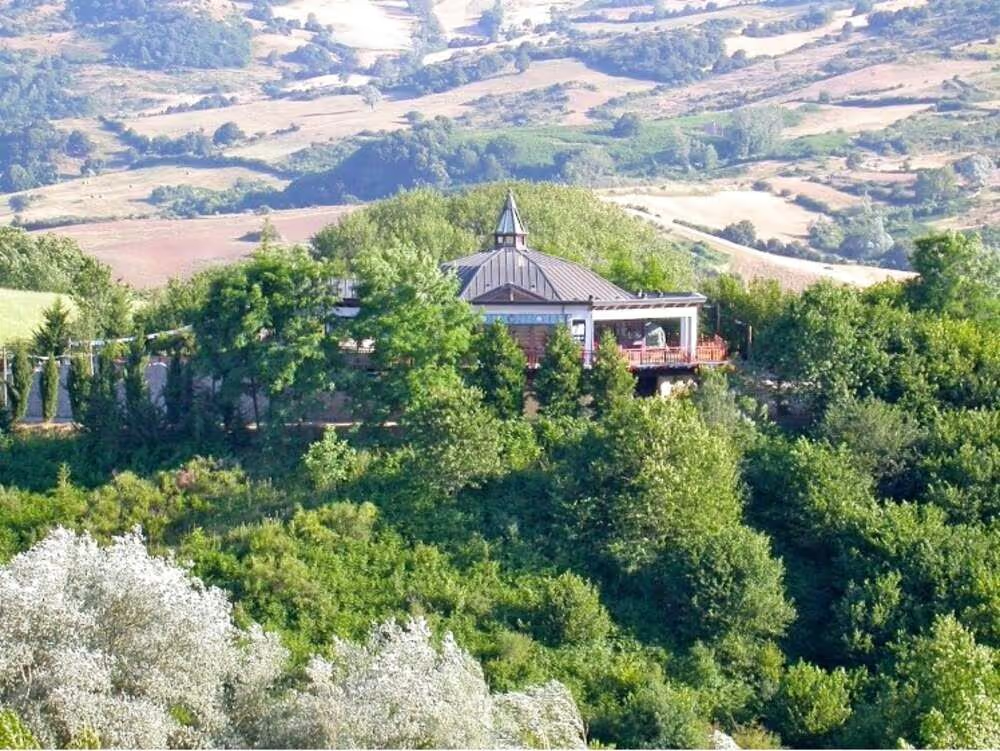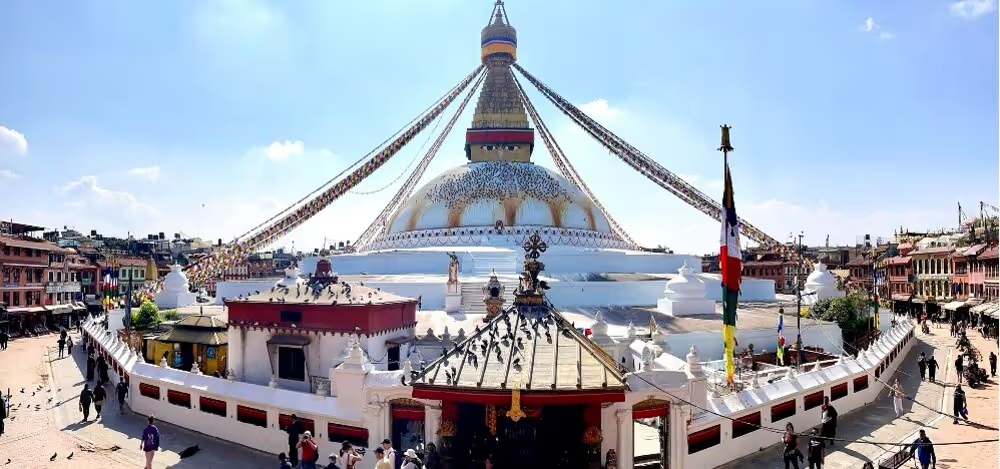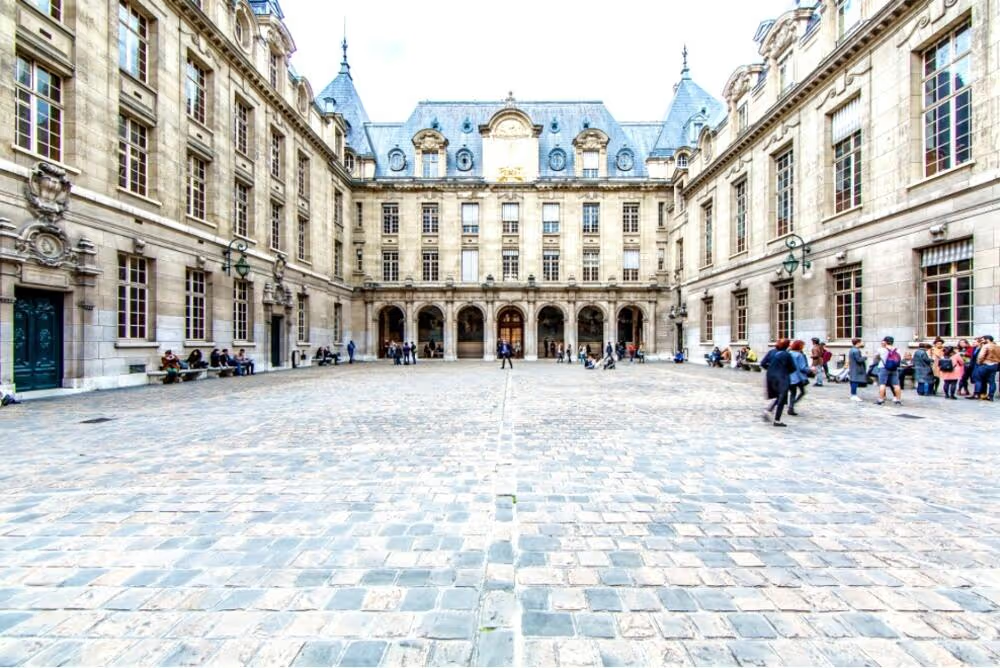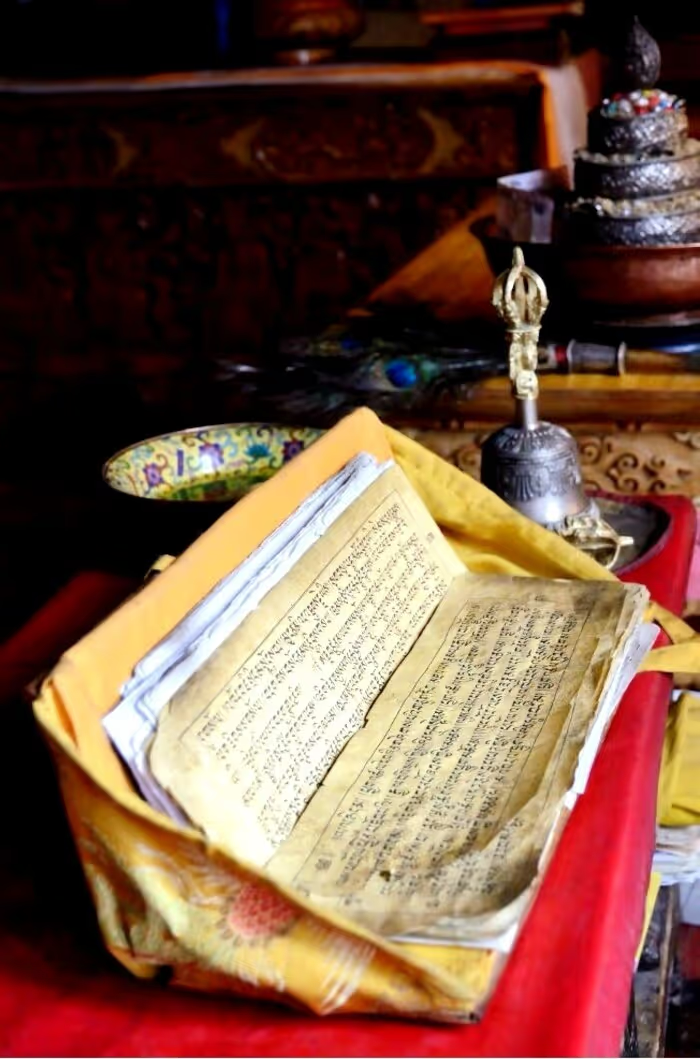At a time when Western society is showing a growing interest in contemplative traditions, Ferrán Mestanza stands out for his ability to build bridges between the wisdom of Tibetan Buddhism and the contemporary world. Your next participation as a teacher in the online course “Vajrayana and Tibetan Buddhism: Teachings and Practices”, co-organized by the Fundació Universitat Rovira i Virgili and the Dharma-Gaia Foundation, offers a valuable opportunity to approach these teachings from a rigorous and accessible perspective.
Ferran Mestanza García, a disciple of renowned Tibetologist Ramon Prats, combines a solid academic background with extensive practical experience. He has a degree in Humanities from the Pompeu Fabra University (UPF) and in Oriental Languages and Civilizations, with a specialization in Tibetan, from the Institut National des Langues et Civilisations Orientale (INALCO). In addition, he holds the Diplôme d'Études Appendies (DEA) degree in Higher Asian Studies. He is accredited as a Level 2 instructor in MBSR (Mindfulness-Based Stress Reduction) by the Brown University School of Public Health. His academic and professional career has been enriched by three years of stay in India and Nepal, as well as four years in Paris, where he deepened the study and practice of Tibetan Buddhism.
As founding director of the Mindfulness Center from Barcelona, Mestanza has dedicated his professional life to making Buddhist contemplative practices accessible to all types of audiences, always maintaining respect for the authenticity of traditional teachings. His work as a teacher of classical Tibetan and a translator specialized in Buddhist texts has also significantly contributed to the dissemination of the Dharma in the Spanish-speaking world. In this interview, he tells us about his significant initial encounter with Tibetan Buddhism, his academic training and practical experience in Asia, and reflects on the challenge of transmitting these teachings in an authentic and accessible way in the contemporary Western context.

BUDDHISTDOOR IN SPANISH: Please tell us about your initial encounter with Buddhism.
FERRAN MESTANZA: Like many, if not most of the things that happen to us, finding Buddhism was a fluke or, as is often said in Buddhist terms, a causation. In 1996, when I was 19 years old and studying Humanities at the Pompeu Fabra University in Barcelona, I attended, with a small group of classmates, a workshop on Tibetan Buddhism offered by Ramon Prats, who had been professor of Tibetology at the University of Naples. At the end of the day, when the store closed its doors to the public, we met in the heart of Barcelona's Jewish Quarter, in the bedroom of the Santo Domingo Bookstore.
29 years later, I can see that this was the beginning and one of the most important turning points in my life, since what could have been just another “casual” encounter and, therefore, one-off, became a totally significant encounter and the beginning of a life dedicated to the study and practice of Dharma.
In those informal evening sessions, Ramon spoke to us in a close and sincere way about his own experience with his Tibetan teacher Namkhai Norbu, with whom he had close contact in Italy. The simple and direct approach to the natural state of consciousness, characteristic of the Dzogchen tradition or “great completeness”, as well as the simple practices of meditation, devoid of all ritualism and dogmatism, were not distant or exotic to me, but were totally close and full of meaning. In fact, I had the feeling that those teachings and practices were what made the most sense of what I had known and they contained a richness and depth that I wanted to explore.

Knowing that this tradition was so old and was still alive through the transmission of lineages of teachers and disciples, stimulated me to undertake a vital adventure of inner exploration of human nature and outer exploration of distant cultures. So, after that workshop, I began to study privately with Ramon Prats the fundamentals of the classical Tibetan language and Buddhism, and two years later I began to travel to find the sources and the living tradition of Tibetan Buddhism. In the spring of 1998, I attended my first meditation retreat on Mount Amiata, in Tuscany, with Namkhai Norbu, and that summer I traveled to India and Nepal, where I met different Tibetan teachers in exile. Of these meetings, the most important was with Chatral Rinpoché from whom I received the taking of refuge and the name of Shakya Rinchen.
Chatral Rinpoché was 85 years old and led a hermit's life. He lived in a wooden house in the middle of the forest, near the famous Nepalese temple of Dakshinkali and the legendary caves of Yangleshö and Asura, linked to Padmasambhava. Sitting in his meditation drawer, his presence filled the entire room. His gaze was deep and penetrating, and his eyes were crystal clear and pure like those of a child. His voice was especially raspy and deep, and he spoke slowly and softly.
The meeting consisted of a simple cordial conversation about my origins and interests, after which he invited me to return after a few days. Before I left, he hit my crown with his fingers. It was a quick, dry blow. An hour later, already on the bus back to Kathmandu, I realized that, ever since leaving home, I had been experiencing a state of complete peace and mental clarity, an unparalleled state of quiet joy and total fulfillment.
Some time later I remembered that, as a child and adolescent, I had experienced similar states. In fact, I think that most people experience these states naturally in childhood or at special times in their lives, but we forget them if no one talks to us about them or teaches us to reconnect with them. For me, Buddhism does not lead to some altered experience of consciousness or to some kind of exotic enlightenment, but rather teaches us to return to the natural state of completeness of the human being, from which we can lead a meaningful and ethical life.
This was the true “encounter” with Buddhism, which was actually a profound encounter with myself, and which led me to orient my life to the study and practice of the Dharma and, years later, to its teaching.

BDE: We would love to learn more about your academic study and teaching of Tibetan Buddhism. Could you tell us about your training and experience in this field?
After this first trip to India and Nepal in the summer of 1998, that same autumn I went to study classical Tibetan at the University of Paris and began my university education in the field of Buddhist studies.
For the next 14 years, I finished my Humanities degree in Barcelona and, in Paris, I completed a Bachelor's degree and a Master's degree in Tibetan studies. In my Master's thesis, I researched the eleventh century Tibetan teacher, Rongzom Paṇdita, and his role in the formation of the Ancient School (Ranying Man) of Tibetan Buddhism.
My Master's directors were Ramon Prats himself, who for all these years was my main mentor, as well as the renowned Tibetologist from the University of Chicago, Matthew Kapstein. At the University of Paris I also met Lama Tenzin Samphel, a great scholar and practitioner Ñing map whom I am still in regular contact with and from whom I continue to learn.
During this time, I spent 4 years in Paris and continued traveling to India and Nepal, where I spent three years, studying and meeting different teachers. Under the direction of Matthew Kapstein and Ramon Prats, I also started a doctorate. However, after years of academic study and personal practice, in 2012 I decided to abandon my doctorate and start training as a mindfulness teacher, in order to open myself to a modern and secular approach to Buddhism, and to integrate its practice with my culture and society.

BDE: How would you say that knowledge of the classical Tibetan language influenced your understanding of Tibetan Buddhism?
Right from the start, it was very important for me to know the Buddhist tradition directly and not just to approach Buddhism based on Western translations, adaptations or interpretations. For this reason, I decided to travel to India and Nepal to receive personal teachings from the teachers and, on the other hand, I undertook the study of the language of ancient texts and, in this way, to be able to access the sources of my own tradition.
Without a doubt, this direct approach has been the element that has most influenced my understanding of Buddhism. At the same time, my subsequent approach to modern mindfulness has helped me to be able to integrate traditional concepts and practices to my reality and my needs in today's society and era.
Thus, while I publicly teach mindfulness classes, privately I continue to teach classical Tibetan classes to a very small group in which we read, translate and comment on excerpts from Tibetan Buddhist texts, especially from the Dzogchen tradition and the 14th century teacher Longchenpa, for whom we are preparing the translation of Chos dbyings mdzod: The space of nature of reality.

BDE: In 2018, you founded the Barcelona Mindfulness Center. What was your path to mindfulness and what aroused such a deep interest in this practice in you?
On one occasion, the Tibetan lama Dugu Choegyal Rinpoché told me something like this: “We went to the West, we tried to teach Buddhism and, after many years, we found that it didn't work. Now maybe it should be the Westerners who come here who try to teach when you come back.” For most Westerners, Asian Buddhist beliefs and practices are not applicable to their culture. Buddhism does not exist in a bubble, nor can it be transplanted from one society to another. Buddhism has always been part of the culture of its environment. What sense does it make for a Westerner to perform a Tibetan medieval ritual every day?
Modern mindfulness is a reformulation of Buddhist teachings and practices adapted to the Western, secular and scientific context, but, for me, mindfulness and Buddhism are one and the same thing, which can be expressed in infinite ways.
BDE: You have taught hundreds of mindfulness courses in the last decade, sharing this adaptation of the traditional teachings of Buddhism to the modern context. What challenges do you face in teaching this practice to people with such diverse profiles and in such varied environments? How do you manage to transmit the profound essence of this ancient tradition in a fast-paced and pragmatic world, preventing mindfulness from losing its authenticity when it becomes popular?
This is the challenge and a question that I ask myself every time I start teaching. The basis is, first, to maintain authenticity in oneself, leading a life that is as ethical and integral as possible. Mindfulness is not a meditation tool or technique to alleviate lifestyle symptoms, such as stress, anxiety or depression. What I want to say is that, for me, mindfulness is not a practice that we do while we continue with our lives, our relationships or our work, but it is, in itself, an integral way of living that leads us to transform, little by little, our way of acting and living, to transform our attitudes, relationships, work, diet,...
The key point is ethics, that is, the way of living. Awakening to the true nature of consciousness, being aware of and keeping in mind the natural state of our mind and heart, returning to our human nature is healing, it leads us to transform the way we act and live, and it opens us to appreciate this wonderful life, even with all its difficulties.
Useful links:
Articles published on Buddhistdoor in Spanish
”Editorial introduction to the special edition “Buddhist Education in Latin America and Spain”by Buddhistdoor in Spanish
”The situation of Buddhist studies in Spain: educational programs” by Juan Arnau Navarro, Montse Castellà Olivé, Francisco Díez de Velasco, Ricardo Guerrero Diáñez, Basili Llorca Martínez, Daniel Millet, Agustín Pániker Vilaplana, Aleix Ruiz Falqués, Jaume Vallverdú Vallverdú, Abraham Vélez de Cea.
Key Publications in Spanish-Speaking Buddhist Studies
Buddhist Studies in Latin America and Spain (Volume I), edited by Daniel Millet Gil and Jaume Vallverdú. This first volume brings together a series of essays that explore the relationship between Buddhism and Spanish-American culture, addressing issues such as the reception of Buddhism in Latin America and Spain, the translations of Buddhist texts into Spanish and the impact of Buddhism on contemporary societies.
Downloadable at: https://llibres.urv.cat/index.php/purv/catalog/view/563/583/1270
Buddhist Studies in Latin America and Spain (Volume II), edited by Daniel Millet Gil and Jaume Vallverdú. The second volume expands the focus of the first, including contributions that analyze Buddhism from interdisciplinary and regional perspectives, with an emphasis on its interaction with local cultural traditions and its impact on the academic environment.
Downloadable at: https://llibres.urv.cat/index.php/purv/catalog/view/595/610/1301
——————————————————————————
Daniel Millet Gil has a law degree from the Autonomous University of Barcelona and a master's degree and doctorate in Buddhist Studies from the Center for Buddhist Studies of the University of Hong Kong. Awarded the Tung Lin Kok Yuen Award for Excellence in Buddhist Studies (2018-2019). He is executive editor and regular contributor to the Buddhistdoor platform in Spanish and founder-president of the Dharma-Gaia Foundation, a non-profit organization dedicated to academic teaching and dissemination of Buddhism in Spanish-speaking countries. This foundation also promotes and sponsors the Catalan Buddhist Film Festival. In addition, Millet serves as co-director of the Buddhist Studies program at the Fundació Universitat Rovira i Virgili (FURV). In the editorial field, he manages both Editorial Dharma-Gaia and Editorial Unalome, both specialized in publishing translations of Buddhist texts. His numerous academic publications are available at: https://hku-hk.academia.edu/DanielMillet










